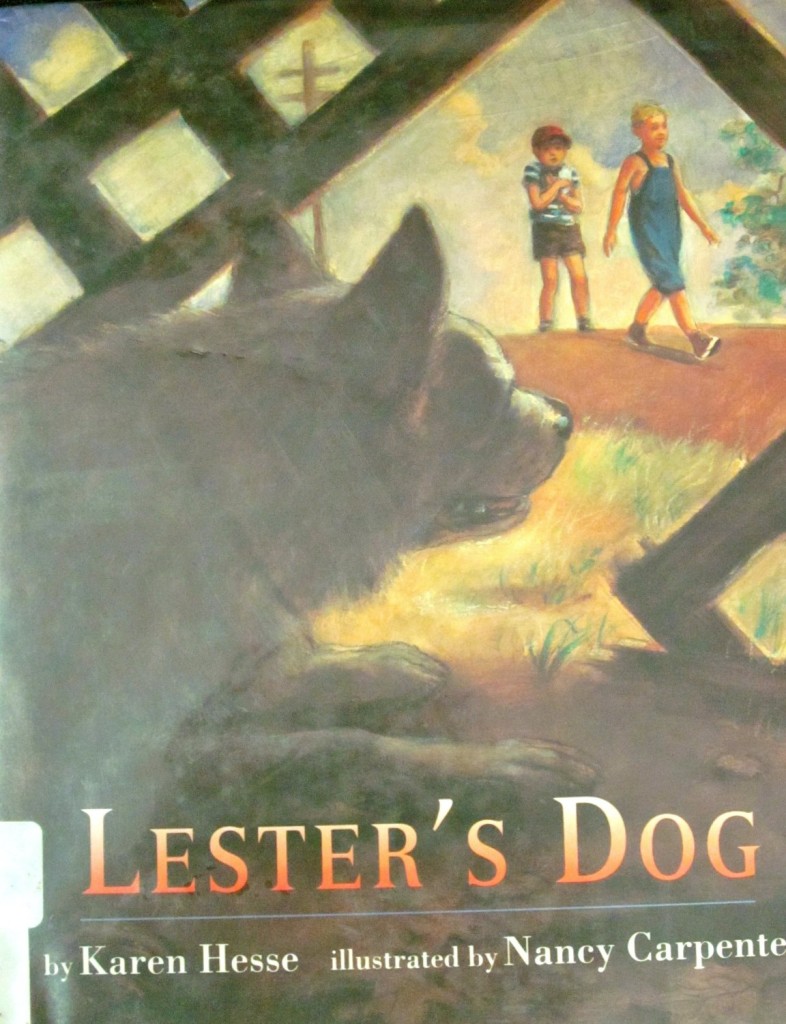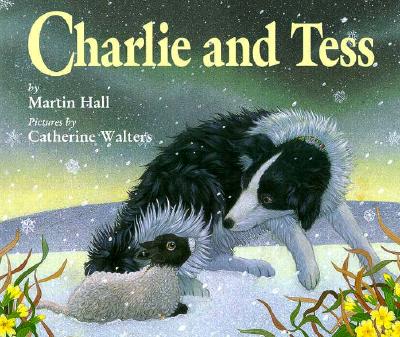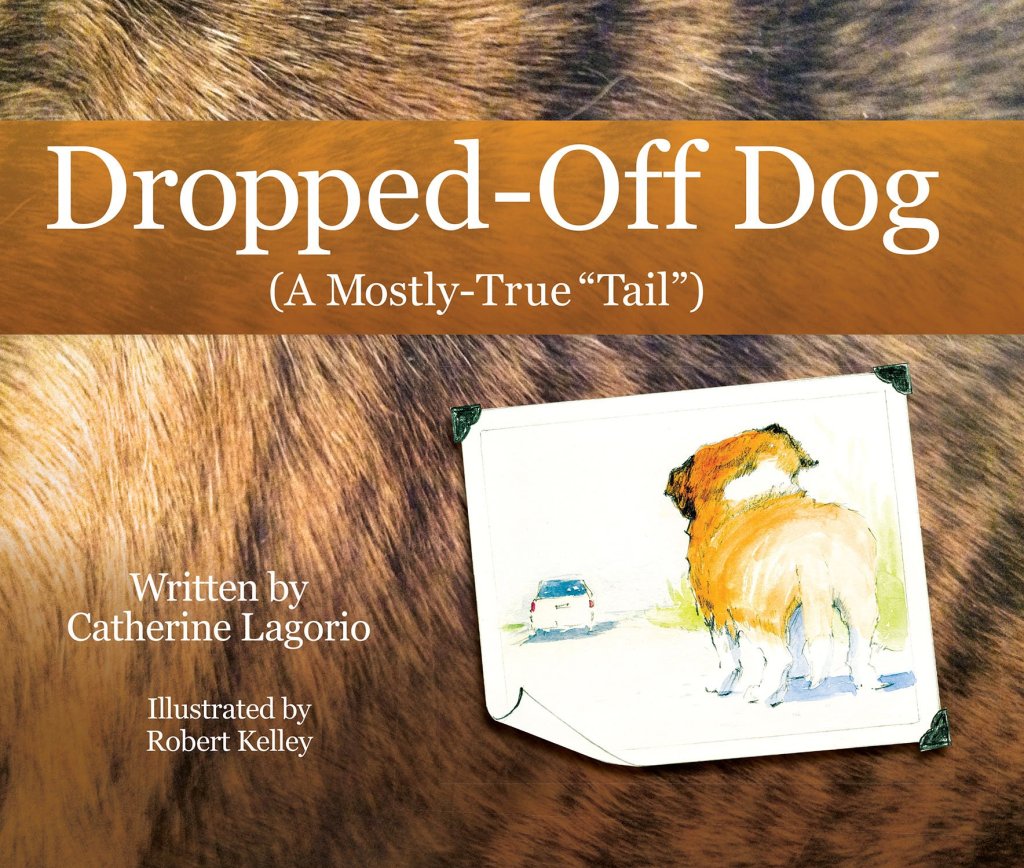
It’s kind of a depressing neighborhood. The narrator walks past the home of Mr. Frank, and remembers that “Mama says he’s a broken man since Mrs. Frank died…” But the narrator’s deaf friend, Corey, urges him to ignore Lester’s dog and follow him up the hill. “It doesn’t matter what you say to Corey, ’cause he can’t hear you, and even if he could, he’s too stubborn to listen.”
The book is called Lester’s Dog, who is actually a neighborhood legend. (The dog bit the narrator when he was six, leaving a scar on the boy’s nose…) The book opens as he’s watching the dog barking down the street after a passing car. Lester’s house has a patched, dusty lawn, “and the grass gone from Lester’s dog digging it up.” But nothing stops Corey – not even Lester’s dog – and soon the two friends are dodging traffic to cross Pimlico Road.
All the details about the neighborhood make the story seem real. Author Karen Hesse apparently based it on memories of some real friends, dedicating the book to “the whole West Garrison Avenue gang but especially for Joey.” There’s even realistic, chalk-like drawings that make the children seem like real people. It adds tension to the story about the neighborhood’s lurking drama: the threat from that dog of Lester’s.
Corey’s found an abandoned kitten, and the kitten seems to be smiling along with the boys. The boys carry it home – dodging the traffic again to cross Pimlico road, and “Before I know it, we’re at the top of Garrison Avenue. And there, two lawns down, is Lester’s dog…” The dog growls, “low and nasty” and the boy with the kitten feels scared. The kitten meows and shivers, and then the dog lunges, snapping and snarling.
He leaps! He barks! He snaps for the kitten. After running desperately, the furious narrator suddenly yells back, “from a place inside of me I didn’t know was there.” And the dog slinks away, whining and “crawling on his belly to hide under Lester’s porch.” (One reviewer on Amazon complained that “This is the worst message possible for a child who may be unfamiliar with dogs…running away from a dog is the SUREST way to get bitten, and staring into a dog’s face is perceived by the dog as menacing-inviting an attack.”) But as the book ends, the cars are now driving down the street without being chased by the barking dog after all. And best of all, the yelling attracts Mr. Frank, who’s finally left his arm chair and is waving to the boys.
“[A]nd I know just what to do with that kitten after all.”

